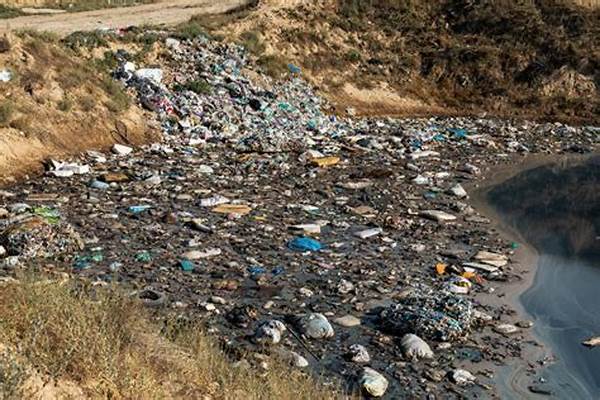The phenomenon of soil contamination due to conflict has emerged as a significant environmental and public health concern. Conflicts, whether armed or otherwise, often lead to the degradation of land and contamination of soil. This type of environmental damage, while sometimes overlooked in the immediate aftermath of conflict, poses long-term threats to ecosystems and human populations. The pathways through which conflicts lead to soil contamination are varied, involving direct actions such as land mines and chemical spills, as well as indirect consequences like neglect of land management.
Impact of Armed Conflicts on Soil Quality
Soil contamination due to conflict is particularly evident in regions enduring prolonged armed engagements. During such conflicts, military strategies often involve the deployment of explosive devices, chemical agents, and other hazardous materials, which directly contaminate the soil. This can lead to elevated levels of heavy metals and toxic compounds, rendering the soil unsuitable for agriculture and thereby threatening local food security. The socio-economic repercussions are profound, as communities dependent on agriculture are left vulnerable to poverty and malnutrition. Additionally, the loss of arable land contributes to larger environmental degradation, exacerbating the ecosystem’s fragility. Furthermore, the rehabilitation of contaminated soils is a complex and costly process, requiring considerable technological and financial resources that may be scarce in post-conflict regions.
Mechanisms of Soil Contamination Due to Conflict
1. Explosive residue: Military explosives can leave harmful residues, contributing to soil contamination due to conflict.
2. Chemical warfare agents: Utilization of chemical weapons leads to dangerous soil contamination.
3. Oil spills: Conflicts often result in the sabotage of oil facilities, causing soil contamination.
4. Heavy metal deposition: Ammunition and military equipment release heavy metals, degrading soil quality.
5. Neglect of land management: Conflict diverts attention from effective soil conservation practices.
Environmental and Human Health Consequences
Soil contamination due to conflict has far-reaching consequences for both the environment and human health. Contaminated soils can lead to the accumulation of toxic elements in food crops, posing severe health risks to the population consuming these products. Chronic exposure to these elements can result in a range of health issues, including cancer, neurological disorders, and developmental problems in children. Moreover, the natural vegetation often suffers as contaminants inhibit plant growth, leading to a loss of biodiversity and disruption of natural habitats. This further destabilizes the ecosystem and diminishes its capability to provide ecological services. The restoration of these habitats requires concerted efforts, including reforestation and soil remediation, to re-establish a healthy ecological balance.
Socio-Economic Implications of Soil Contamination
1. Decreased agricultural productivity: Soil contamination due to conflict adversely affects crop yields.
2. Food insecurity: Contaminated soil leads to reduced food availability, exacerbating hunger issues.
3. Economic hardship: Farmers face financial challenges due to diminishing land value and productivity.
4. Increased healthcare costs: Health problems stemming from contaminated soil burden healthcare systems.
5. Population displacement: Degraded soil forces communities to relocate, disrupting social structures.
6. Loss of biodiversity: Soil contamination harms local flora and fauna, impacting ecological balance.
7. Rehabilitation costs: Cleaning contaminated soils requires significant investments and scientific expertise.
8. Loss of traditional knowledge: Displacement and soil degradation lead to cultural heritage erosion.
9. Impacts on water resources: Contaminants can leach into water supplies, compounding health hazards.
10. Social instability: The combined effects of soil contamination can exacerbate conflict and societal tensions.
Restoration and Remediation Efforts
Addressing soil contamination due to conflict demands comprehensive remediation strategies tailored to the specific contaminants and soil conditions present in affected areas. Bioremediation, a process that uses microorganisms to break down harmful substances, presents a promising technique for restoring contaminated land. Phytoremediation, utilizing plants with the ability to absorb toxins, is another viable approach. However, these methods require scientific expertise and sustained efforts, often hindered by limited post-conflict resources. International cooperation and support play a crucial role in facilitating these initiatives, as they provide the necessary technical and financial backing. Furthermore, involving local communities in these efforts ensures sustainable practices are ingrained in cultural and social frameworks, fostering long-term success.
Policy and International Collaboration
International policies and frameworks are essential to effectively combat soil contamination due to conflict. Nations must prioritize the inclusion of environmental clauses in peace negotiations and post-conflict reconstruction strategies. Global organizations and non-governmental entities can offer technical assistance and funding to support remediation projects and promote sustainable land management practices. Collaborative efforts between countries also enhance the sharing of knowledge and resources, enabling more efficient and widespread application of remediation technologies. Furthermore, raising awareness about the environmental impacts of conflict can galvanize public support and drive initiatives aimed at preventive measures, helping to safeguard soil quality in vulnerable regions.
Conclusion
In summary, soil contamination due to conflict is a multifaceted issue with profound environmental and socio-economic implications. It poses severe risks to food security, human health, and ecosystem stability. The complex mechanisms through which conflicts contribute to soil contamination necessitate diverse, adaptive strategies tailored to regional needs. Remediation efforts, underpinned by international collaboration and community involvement, are crucial for restoring degraded lands and ensuring sustainable recovery. As the global community becomes increasingly aware of the intricate link between conflict and environmental degradation, concerted efforts to address soil contamination must become an integral component of peacebuilding and development agendas, safeguarding both human and environmental health in the aftermath of conflict.





